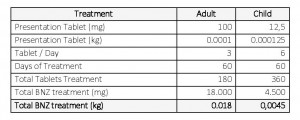The much-anticipated report by the United Nations (UN) High Level Panel on Access to Medicines went public on 14 September. Hopes that its forward-looking recommendations could speedily succeed are threatened, however, by the load of conflicting issues still on the table worldwide

by Daniele Dionisio*
Policies for Equitable Access to Health (PEAH)
Access to Medicines Report, Green Light to Action
The United Nations High Level Panel on Access to Medicines was established in November 2015 and tasked with reviewing and weighing proposals and making recommendations for ending the misalignment among the right to health, trade rules and the patent system, as the main barrier to the equitable access to health priorities.
The much-anticipated report by the Panel finally went public on 14 September. Its well-grounded recommendations and requests to the interested parties make it a cornerstone for all relevant decisions to the fair access to treatments and care not just at a poor country level. Admittedly, access to medicines is a problem of global concern at a time when extortionate drug prices are laming healthcare systems throughout the world.
Relevantly, the Panel calls for WTO members to comply with and globally implement the WTO Doha Declaration on TRIPS (WTO Agreement on Trade-Related Aspects of Intellectual Property Rights) and public health. This includes facilitating the issuance of compulsory licences, rejecting the so-called ever-greening of patents and restricting patents to genuine inventions only.
The report says that “Governments and the private sector must refrain from explicit or implicit threats, tactics or strategies that undermine the right of WTO Members to use TRIPS flexibilities.” It maintains that “Instances of undue political and commercial pressure should be reported to by the WTO Secretariat during the Trade Policy Review of Members.” As per its terms, “WTO Members must register complaints against undue political and economic pressure which includes taking punitive measures against offending WTO Members.”
Coherently, the report calls on governments engaged in international trade and investment negotiations to ensure that these do not include clauses contrary to their obligations to the right to health. The public health impact of the agreements should, instead, be carefully weighed throughout the negotiations and made publicly available.
The Panel insists that the UN agencies (UNCTAD, UNDP, WHO, WIPO among others) should mutually collaborate at their best, including with the WTO and all relevant bodies, to support governments to introduce public health-friendly patentability standards.
As the Panel stresses, “universities and research institutions that receive public funding must prioritize public health objectives over financial returns in their patenting and licensing practices.” That includes the use of non-exclusive licences while giving up intellectual property (IP) rights and joining public sector patent pools and other mechanisms equipped for the maximization of innovation and access.
Relevantly, governments are asked to enhance their levels of investment in health technology innovation to meet neglected needs.
Moreover, the report calls for all the relevant parties to “test and implement new and additional models for financing and rewarding public health research and development (R&D), such as the transaction taxes and other innovative financing mechanisms.”
What’s more, the Panel urges to begin negotiations at the WHO for a binding research and development treaty up to delinking R&D costs from the end prices of medicines. The treaty “should focus on public health needs, including but not limited to, innovation for neglected tropical diseases and antimicrobial resistance and must complement existing mechanisms.”
Furthermore, the Panel contends that “Governments should strengthen national level policy and institutional coherence between trade and intellectual property, the right to health and public health objectives by establishing national inter-ministerial bodies to coordinate laws, policies and practices that may impact on health technology innovation and access.”
Meanwhile, the United Nations Secretary-General is asked to set up an independent review body tasked with assessing progress on health technology innovation and access, while monitoring the challenges and advances on innovation and the enjoyment of technologies for health under the UN 2030 Agenda perspective. Membership should encompass representatives from governments, the UN and multilateral organisations, civil society, universities, and the private sector.
The UN Secretary-General is also requested to establish an inter-agency taskforce on health technology innovation and access working “toward increasing coherence among United Nations entities and relevant multilateral organizations like the WTO.”
The report contends that “Governments should require manufacturers and distributors of health technologies to disclose to drug regulatory and procurement authorities information pertaining to:
(1) the costs of R&D, production, marketing and distribution of health technology being procured or given marketing approval with each expense category separated; and
(2) any public funding received in the development of the health technology, including tax credits, subsidies and grants.”
Relevantly, the WHO is invited to establish and keep up with an “accessible international database of prices of patented and generic medicines and biosimilars in the private and public sectors of all countries where they are registered.” At the same time, governments are asked to establish, preserve and update publicly accessible databases with patent information status and relevant figures to drugs and vaccines.
Falling Short of Expectations?
It is strict duty for the UN system to work with governments to ensure the report’s recommendations are carried into effect with no delay. Unfortunately, since the Panel asks all counterparts to act in unison toward the best collaboration, coherence, accountability and transparency, the percentage of success is unpredictable at the moment.
Admittedly, in today’s global landscape, which is torn by misalignment, litigations and frictions among the involved parties, governments look like they wouldn’t be ready to embark on these recommendations as an opportunity to advance public health over political and commercial interests.
From bad to worse, the current governments’ directions and trade agreements, largely by the European Union (EU) and the United States (US), run contrary to the Panel’s principles while turning IP agendas into policies that protect monopolistic interests at the expense of equitable access to care and lifesaving treatments in resource-limited settings.
Just for example, the Panel’s request for transparency in costs to help curb extortionate drug prices looks like a difficult task now that pharma companies and their allies are lobbying policy decision makers to scupper any rules that would force them to disclose the real R&D costs and profits of their medicines and the rationale for charging what they do.
As such, it comes as no surprise that the report was opposed by the US Chamber of Commerce and the pharmaceutical industry.
These circumstances bode ill at a time when the US administration is lobbied by the pharmaceutical corporations, the European authorities are doing almost nothing to check the tide of ‘me-too’ drugs, and the European Medicines Agency keeps testing new medicines only in terms of safety and efficacy compared with a ‘pretend’ drug.
To conclude, what expectations for the world landscape mentioned above? Hopes that comprehensive, non-discriminatory health goals could speedily be reached are threatened by the load of conflicting issues still on the table. As argued, “Achieving health equity is not just a matter of coming up with technical solutions and providing the means to finance them. We have to consider the political landscape and rectify the dysfunctions in global governance that undermine health…”
All things taken together, the Panel’s report recommendations look like a hard bet. Yet, they matter against all the odds as an overarching voice hammering the point that prospects for global health goals only depend on non-stop, multi-sector engagement worldwide to pressure governments into making “U-turn” changes by common measures on a shared agenda.
————————————————————————–
*article originally published in IHP – International Health Policies http://www.internationalhealthpolicies.org/access-to-medicines-report-green-light-to-action/
Daniele Dionisio is a member of the European Parliament Working Group on Innovation, Access to Medicines and Poverty-Related Diseases. He is an advisor for “Medicines for the Developing Countries” for the Italian Society for Infectious and Tropical Diseases (SIMIT), and former director of the Infectious Disease Division at the Pistoia City Hospital (Italy). Dionisio is Head of the research project PEAH – Policies for Equitable Access to Health. He may be reached at d.dionisio@tiscali.it http://www.peah.it/ https://twitter.com/DanieleDionisio





